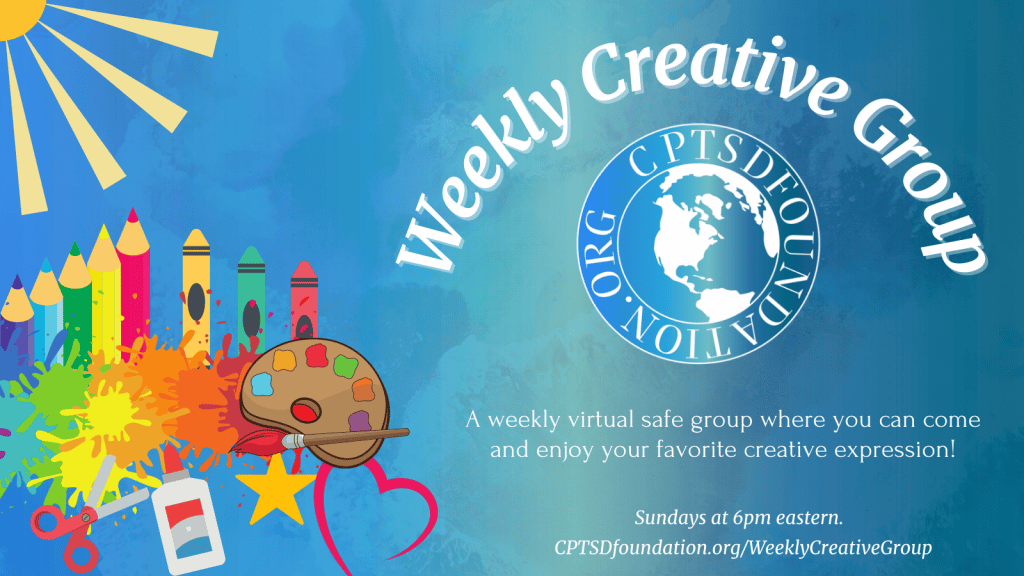For years, I felt fragmented—like different versions of myself were constantly at war. There were various patterns, depending on the context. Falling in love was one of those areas where conflicting parts showed up. One moment, I felt strong and independent. But once I fell in love, I became overly dependent and fearful. I never understood that pattern, but felt like I was a different person. It wasn’t me anymore. It wasn’t until I discovered parts work therapy that I understood: I wasn’t broken. I had survived extreme circumstances.
Parts work became the foundation of my healing from childhood trauma. I began the journey toward becoming whole by reconnecting with my inner parts—especially my wounded inner child. If you’re living with complex PTSD, understanding parts work might transform your recovery, too.
What Parts Work Actually Means
We don’t typically talk about having “parts,” but you’ve likely experienced them. Ever felt torn between conflicting emotions—simultaneously sad and angry? Or noticed yourself acting in ways you later regret, almost as if someone else took control? These are your parts.
Parts work recognizes that we are multifaceted: the angry, scared, or caregiver part. We might have a wise part that holds hard-earned wisdom, or a creative part that helps in our recovery.
I learned parts work through my healing journey and professional training as a coach and counsellor, whether it was inner child work or various coaching modalities. After trying traditional talk therapy that did not work well for me, parts work became a path to understand my inner world and become a caring adult for my different parts. Different therapeutic approaches work with parts, including Internal Family Systems (IFS) developed by Dr. Richard Schwartz,¹ Gestalt therapy, and the methodologies created by Dr. Janina Fisher.²
The Science Behind Fragmentation
For adults with childhood trauma, parts often develop through what researchers call structural dissociation. In their groundbreaking work, van der Hart, Nijenhuis, and Steele³ explain how chronic trauma—especially in childhood—causes our brain to do something brilliant and protective: it splits.
The rational parts help us function day-to-day, go to work, and maintain relationships. They minimize what happened, telling us, “It wasn’t that bad.” Meanwhile, the emotional parts carry the unbearable burden—the pain, terror, shame, and memories we couldn’t process when the trauma occurred.
These emotional parts hide behind an invisible wall. But they don’t disappear. They wait, and when something in the present triggers them, they flood forward because they want to be digested, leaving us feeling out of control.
When I left home at 19, I mainly lived in the rational parts. I did not yet fully understand the violence in my family of origin and how it had affected me. The wounded parts showed up under stress, whether falling in love or being in conflict. When I first learned about the theory of structural dissociations, it resonated deeply with how the trauma had affected me, but also showed me my own healing journey.
Through professional development training with Dr. Janina Fisher on working with structural dissociation, I learned how this fragmentation exists on a spectrum. The more complex and chronic the trauma, the more elaborate our internal system becomes—and the healing process gently asks us to peel these layers with patience and persistence.
Common Trauma-Related Parts
Traditional talk therapy often fell short for me. Parts work changed everything because it acknowledged the complexity of my inner world. Common trauma-related parts include:
The Fight Part: Hypervigilant, aggressive, ready to defend against any perceived threat, even when we’re actually safe.
The Flight Part: Desperate to escape through avoidance, addictive behaviours, or elaborate daydreams of idealized safety.
The Freeze Part: Immobilized by terror, experiencing high anxiety, yet unable to move or speak.
The Fawn Part: The “please and appease” part that sacrifices all boundaries, has people-pleasing tendencies, and carries profound shame.
The Attach Part: Lonely, abandoned, crying out for connection with the desperation of a small child.
I recognized my strong fawn part immediately—the one that had let go of every boundary to survive childhood abuse. While it protected me then, it did not allow me to defend my boundaries as an adult and wasn’t helpful to protect myself from toxic relationships.
Some of my clients feel deeply seen when I explain the theory of structural dissociations. It allows them to understand the connection between what happened to them and their symptoms.
The Journey Toward Integration
The goal of parts work isn’t to eliminate parts or achieve some false sense of unity. It’s about fostering healthy connections between your adult self and your various parts. It’s like the Japanese art of Kintsugi—rejoining broken pottery with gold. The mended piece becomes more precious than before, with each fragment and each golden seam contributing to its beauty.
I started to be curious about my parts and separated them from myself—mainly by externalizing them. My fear became a part of the fear of relationships. The part of me that generally jumped into relationships too quickly was like a horse. My essence part became a snail. Sometimes, they weren’t very willing to be in the same room. Externalizing my parts like this created space between me and overwhelming emotions. I could talk to them, understand them, and let them explain their point of view.
Next came the more complex work: connecting with parts I’d rather ignore. I worked intensely with my three-year-old part, who carried wounds from sexual abuse. At first, it felt strange—even silly—to visualize this young part and ask it what it needed. But when I approached it with curiosity instead of judgment, something shifted. It took time to create trust with the part—until one day it did trust me enough.
Parts work taught me that even my most difficult parts had protective intentions. Drawing on principles from Internal Family Systems—that all parts are welcome and there are no bad parts¹—I learned to separate the part’s protective intention from its behaviour. This distinction was crucial for my healing.
Practical Steps to Begin
If you’re considering parts work, start gently:
Notice when parts activate. Pay attention to sudden emotional shifts or body sensations. What’s happening internally? What triggered this?
Practice parts language. Reframe “I am angry” to “a part of me feels angry.” Notice how this creates breathing room.
Get curious, not judgmental. When a part emerges, lean into curiosity. What is this part trying to protect you from?
Try journaling. Write a dialogue between your adult self and a part. Let the part express its feelings, fears, and needs.
Start with less intense parts. Before diving into your most wounded parts, practice connecting with your wise part or creative part.
Moving Forward
Parts work requires patience and persistence. Some days, my parts still storm like rough seas, demanding attention. But now I can check in with them, validate their concerns, and help them feel heard. When they settle, I experience a profound inner calm I never thought possible.
If you’re feeling fragmented, know this: reconnecting with your parts and doing inner child work can help you become whole. Not by erasing what happened or eliminating parts of yourself, but by bringing curiosity to every aspect of who you are.
You’re not broken. You survived. And now, you can heal.
References
Anderson, F. G. (2021). Transcending Trauma: Healing Complex PTSD with Internal Family Systems. PESI Publishing.
Schwartz, R. C. (2021). No Bad Parts: Healing Trauma and Restoring Wholeness with the Internal Family Systems Model. Sounds True.
Fisher, J. (2017). Healing the Fragmented Selves of Trauma Survivors: Overcoming Internal Self-Alienation. Routledge.
Van der Hart, O., Nijenhuis, E. R. S., & Steele, K. (2006). The Haunted Self: Structural Dissociation and the Treatment of Chronic Traumatization. W.W. Norton & Company.
Porges, S. W. (2011). The Polyvagal Theory: Neurophysiological Foundations of Emotions, Attachment, Communication, and Self-regulation. W.W. Norton & Company.
Guest Post Disclaimer: Any and all information shared in this guest blog post is intended for educational and informational purposes only. Nothing in this blog post, nor any content on CPTSDfoundation.org, is a supplement for or supersedes the relationship and direction of your medical or mental health providers. Thoughts, ideas, or opinions expressed by the writer of this guest blog post do not necessarily reflect those of CPTSD Foundation. For more information, see our Privacy Policy and Full Disclaimer.
Natalie is a trauma counsellor and trauma-informed coach based in Calgary with over 14 years of experience supporting adults worldwide in healing from complex trauma and childhood abuse. Their approach integrates EMDR, IFS-informed parts work, and somatic approaches, rooted in anti-oppressive and social justice practices. They completed professional development training with Dr. Janina Fisher and Frank Anderson’s Internal Family Systems trauma treatment. Natalie shares trauma recovery insights on their podcast, Trauma Demystified. You can learn more at brighthorizontherapies.com.




